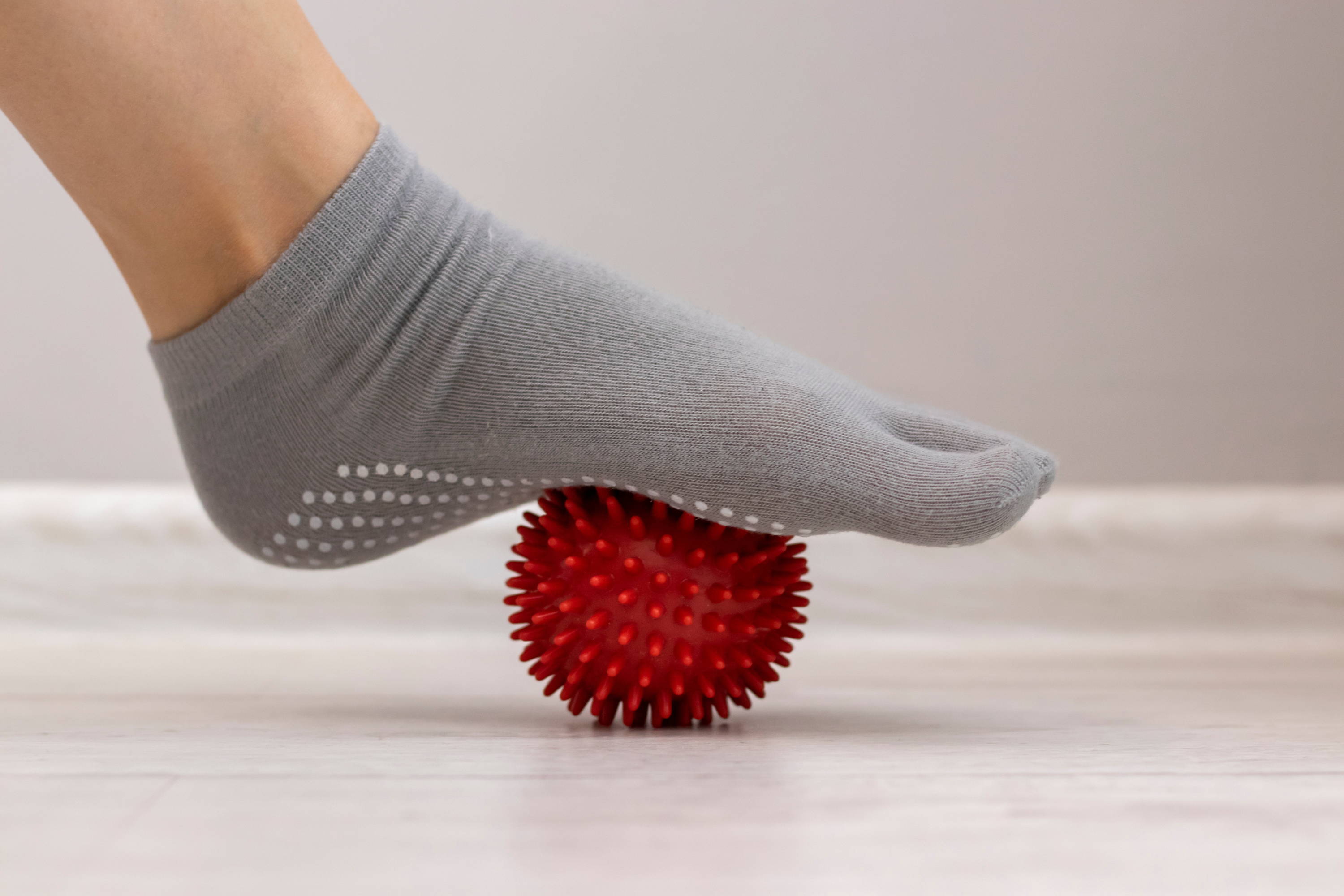Running is a risky and expensive hobby. The more mileage and pounding you place on your feet, the more likely you will get injured without taking the proper precautions. At Holabird Sports, we’ve helped our customers avoid injuries for over 40 years by recommending the proper shoes, insoles and recovery items. We know from experience how frustrating it can be to set fitness goals and know what your body can do, only to be derailed by a nagging injury.
One of the most common injuries runners encounter is Plantar Fasciitis. We cringe and shudder at the word whenever a customer mentions this nuisance in the store. You never realize how important your feet are until they are injured. We often take for granted the ability to take pain-free steps during exercise and daily living. That’s why we’ve teamed up with the experts at True Sports PT to educate runners and frequent exercisers about the symptoms, treatment and prevention of PF so you can AVOID THE ITIS. Let’s dig into the details.
What is Plantar Fasciitis?
The plantar fascia is the connective tissue running along the bottom of the foot from heel to toe. This tissue supports the muscles and arch of the foot during activity. Plantar Fasciitis is the overuse and continuous overstretching of the fascia, which causes pain and inflammation.
What are the symptoms of Plantar Fasciitis?
One of the initial signs of PF is “first-step pain,” which describes the sharp soreness and throbbing sensation in the bottom of the foot around the heel bone. It’s commonly felt in the morning when you first wake up. You may also notice pain after exercising or during push-off while running.
How do I treat Plantar Fasciitis?
The first thing to try is rolling the bottom of your foot on a tennis ball or frozen water bottle. This technique helps to mobilize the tissue and address inflammation. Using an over-the-counter orthotic (such as those at Holabird Sports) allows the plantar fascia to rest for a few weeks.
The other important step is stretching the plantar fascia and calf, as well as performing strengthening exercises for your foot, as shown below. You can also take medications such as Aspirin and Ibuprofen to reduce inflammation and help with the pain. In more severe cases, you can get a steroid injection in your foot, which eases the pain for a month and reduces swelling even longer.
Surgery is a last resort and rarely needed, as proper treatment can take care of PF after a few months. You can also try these physical therapy exercises to strengthen the calves, Achilles, and arch:
Stretching and Strengthening Exercises
How can I prevent Plantar Fasciitis?
Have time at home when you are barefoot and do strengthening exercises for the foot to help strengthen the arch to improve weight acceptance and shock absorption. Keep the calf stretched out to avoid overworking the plantar fascia from lack of ankle mobility.
Wearing the right shoes and custom insoles is the best way to prevent PF. When shopping for shoes, choose one that flexes at the ball of your foot and not in the center of your arch. You can also decrease the heel drop to 6-8mm to reduce the tension on the Achilles. An insole perfectly molded to your foot will keep the plantar fascia stable and prevent it from overstretching. At Holabird Sports, we sell running insoles to keep customers injury free and reach their training goals while avoiding setbacks.
It’s important to avoid the unnecessary risks that can expose you to this nagging and painful problem. You are more likely to get PF as you age and your arch collapses over time, or if you are overweight and not getting enough shock absorption. If you are in a profession that requires you to be on your feet for several hours at a time, you must support your arch with insoles to prevent this injury. Retail workers, nurses, construction and restaurant workers could all benefit from supporting their feet during those long shifts.
Taking care of your feet is paramount for runners and fitness enthusiasts alike. Everything in the human body is connected and your feet are the foundation. If they aren’t stable or supported, the rest of your body will suffer, leading to injuries in other areas. So make sure you cover all your bases by recognizing the symptoms, following the treatment methods, and using the proper prevention techniques to keep your feet injury free!
We hope you've enjoyed the Holabird Sports and True Sports PT recovery series, where we explore the most common running injuries and how to avoid or overcome them.

